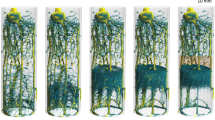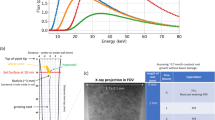Abstract
SOME years ago, one of us investigated the circulation of lead1 in plants using a radioactive lead isotope as indicator. Recent developments in nuclear chemistry make it possible to prepare radioactive isotopes of several of the light elements which, in contrast with lead, are the chief components of plant tissue. This enables us to investigate whether the atoms building up the tissues of the plant remain in their places or migrate during growth to other parts of the plant.
This is a preview of subscription content, access via your institution
Access options
Subscribe to this journal
Receive 51 print issues and online access
$199.00 per year
only $3.90 per issue
Buy this article
- Purchase on Springer Link
- Instant access to full article PDF
Prices may be subject to local taxes which are calculated during checkout
Similar content being viewed by others
References
G. Hevesy, Biochem. J., 17, 439 (1923).
Lohmann and Jendrasik, Biochem. Z., 178, 419 (1926).
Author information
Authors and Affiliations
Rights and permissions
About this article
Cite this article
HEVESY, G., LlNDERSTROM-LANG, K. & OLSEN, C. Atomic Dynamics of Plant Growth. Nature 137, 66–67 (1936). https://doi.org/10.1038/137066a0
Issue Date:
DOI: https://doi.org/10.1038/137066a0
This article is cited by
-
K. U. Linderstrøm-Lang
Ergebnisse der Physiologie Biologischen Chemie und Experimentellen Pharmakologie (1961)
-
Studies of mineral nutrition by use of tracers
The Botanical Review (1955)
-
The use of P32 in studies on the uptake of phosphorus by plants
Plant and Soil (1952)
-
Isotopes as tracers in plants
The Botanical Review (1950)
-
Exchange of Phosphorus Atoms in Plants and Seeds
Nature (1937)
Comments
By submitting a comment you agree to abide by our Terms and Community Guidelines. If you find something abusive or that does not comply with our terms or guidelines please flag it as inappropriate.



